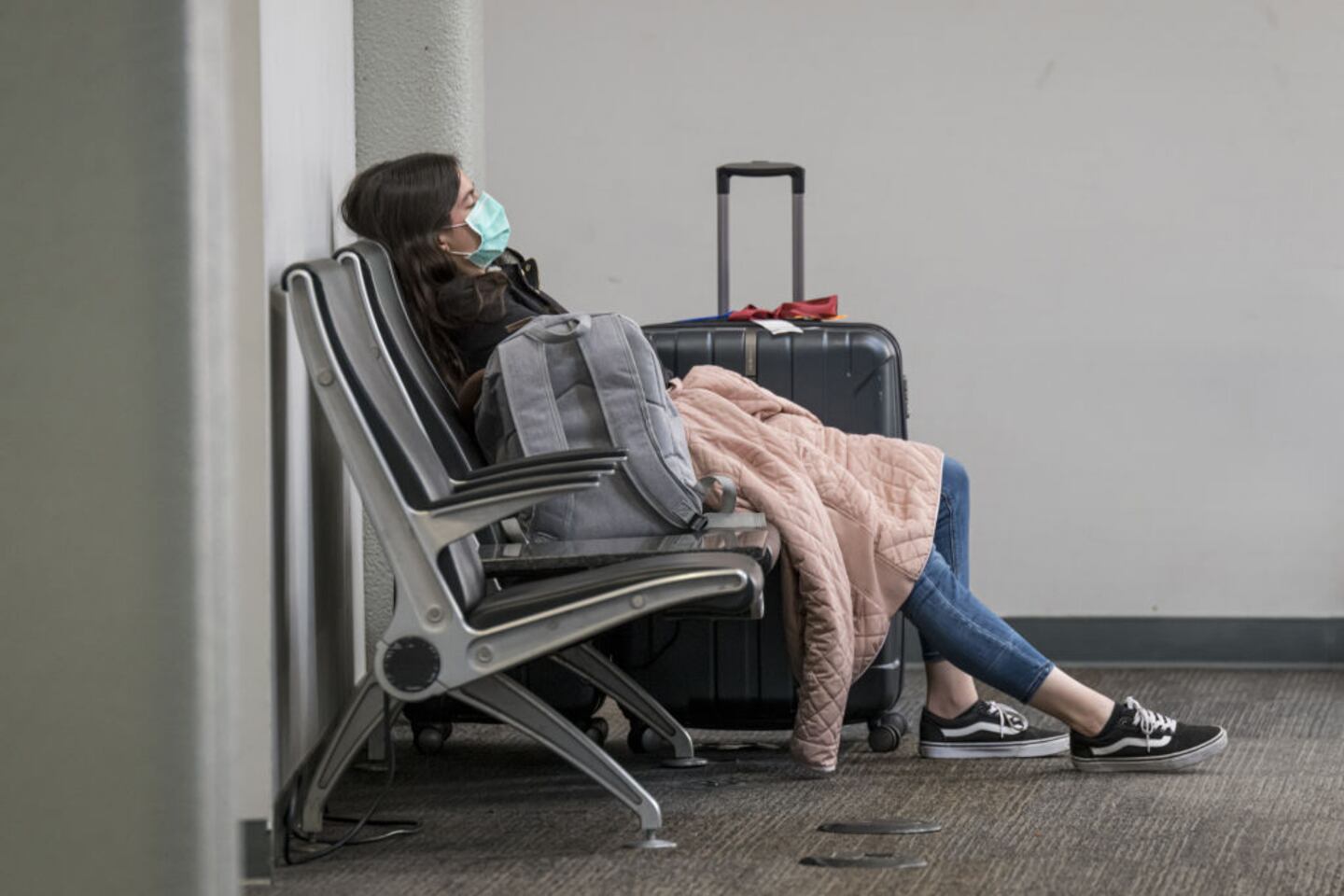Masks, gloves, ‘sanitagged’ luggage and disinfectant tunnels could be the first steps in what is likely a sea change in the way we travel by air, according to an aviation marketing consulting firm’s vision of what’s next for airlines and airports in the wake of the COVID-19 pandemic.
SimpliFlying.com, an aviation marketing consulting firm, released a report this week that details more than 70 different areas that are “expected to either change or to be introduced from scratch, to restore confidence in flying after COVID-19.”
The report looks at all aspects of the airline travel experience, from checking in for a flight to passengers in gloves and masks wiping down their own seats before watching a preflight video on sanitation measures.
While airlines around the world are still weighing just how they change their operations in an effort to keep passengers safe from the new coronavirus, some measures are already being put into place.
Four major U.S. airlines announced this week that they will require passengers to wear protective face coverings on all flights. Jet Blue, Delta, American and Frontier airlines issued policies requiring that both passengers and employees wear masks. Lufthansa Group, which owns Lufthansa Airlines, Swiss International Air Lines and Austrian Airlines, has also announced a requirement that passengers wear protective face coverings.
The companies announced the polices as flight attendants have called on both their employers and the federal government to consider their safety by making face coverings a requirement for travel on airplanes.
The Federal Aviation Administration has not yet issued a policy that would require airline passengers to wear masks or do anything else at airports and on planes. Instead, the agency stressed that airlines need to follow recommendations from the Centers for Disease Control and Prevention that everyone wear face coverings when in public.
The SimpliFlying report goes well beyond just wearing a face covering. It shows the possible four-plus hour process that flying may become in order to keep travelers safe from infections.
Here’s a look at the highlights of the SimpliFlying.com report that predicts the future of airplane travel post-COVID-19. The graphic showing the possible new procedures produced by SimpliFlying.com is below.
Online check-in:
- Before you get to the airport, you would choose a seat, get a boarding pass and pay for checked bags to avoid, or at least speed up, any contact with check-in counter employees or others in line to check-in.
- In addition, you could be asked to upload a document to confirm the presence of COVID-19 antibodies in your blood before flying.
- You’d be asked to purchase a mask and gloves before you arrive at the airport.
Curbside at the airport:
- You could be required to arrive curbside at the airport as many as four hours ahead of your flight.
- Once curbside, you would pass through a "disinfection tunnel" or an area that has a thermal scanner to be sure you did not have a fever as you get ready to enter the airport building.
Check-in and dropping luggage:
- Once you are in the building, you would put on your mask and gloves and go to a touchless kiosk to check-in for the flight. You would do this by scanning a barcode or maybe using voice commands.
- Your bags would be sent through a device that “fogs” them with a disinfectant mist as they move their way along the check-in belt. They are then “sanitagged,” or marked as having been disinfected.
Health check then carry-on and X-rays:
- As you make your way to the terminal, you will undergo a health screening where you would have your temperature taken, and you could have your blood tested using a rapid screening device.
- Your carry-on bags will be placed in a pre-sanitized tray to go through the X-ray machine, which would double as a sanitizing fogger.
Awaiting the flight:
- As you wait to board your plane, you would practice social distancing. You would be spaced out in the waiting area. There would be touchless vending machines in the area so you can get refreshments and a fresh meal before you get on the plane.
- Your health test results would be reviewed and you would be denied access to the flight if you are ill.
Boarding the plane:
- To avoid people smashing up together at the boarding area, you will receive a text notification from the airline telling you when it is your turn to board the plane.
- You will keep between 4 and 5 feet of space between you and the person in front of you as you board.
Once on the plane:
- You will be greeted by flight attendants with masks and gloves on.
- As you get to your seat, you will disinfect it yourself with sanitizer you bring onboard or by some handed out by flight attendants.
- The preflight safety video will likely include simple sanitation procedures to use while on the plane.
- You will likely use your own devices to watch videos — no headphones provided by the airlines.
- An in-flight janitor will become standard on planes, and that person will keep lavatories and other high-touch areas disinfected after passenger use.
- Flight attendants will pass out hand sanitizer or wipes every 30 minutes.
After you land:
- Once you are at your destination, you will again be checked for fever. If you are fever-free, you will be authorized to leave the airport.
- Your bags will be taken from the plane and sanitized before being placed on the belt to take them to the luggage claim area.
- The plane will be deep cleaned before it can fly again.
null
null






